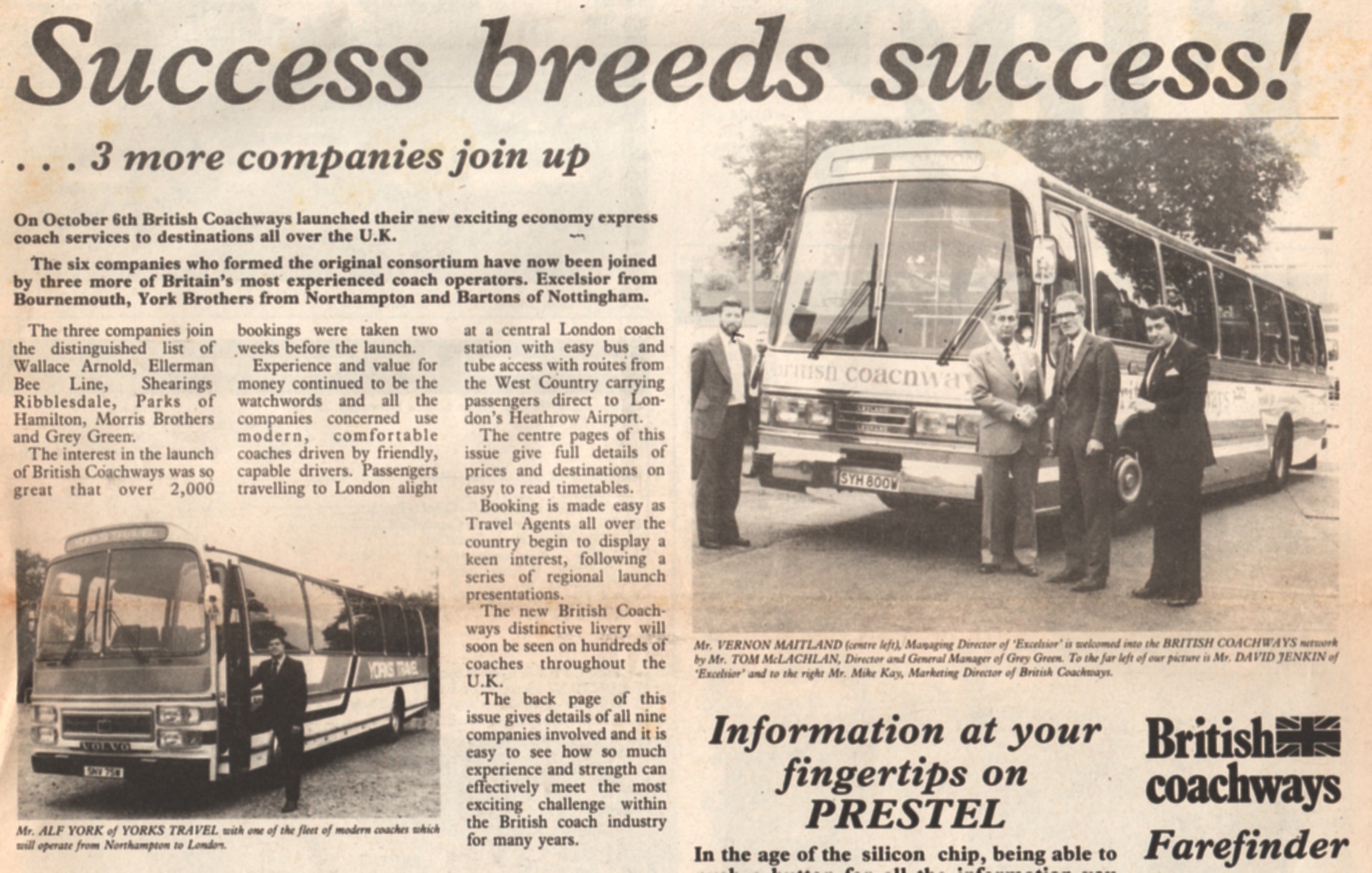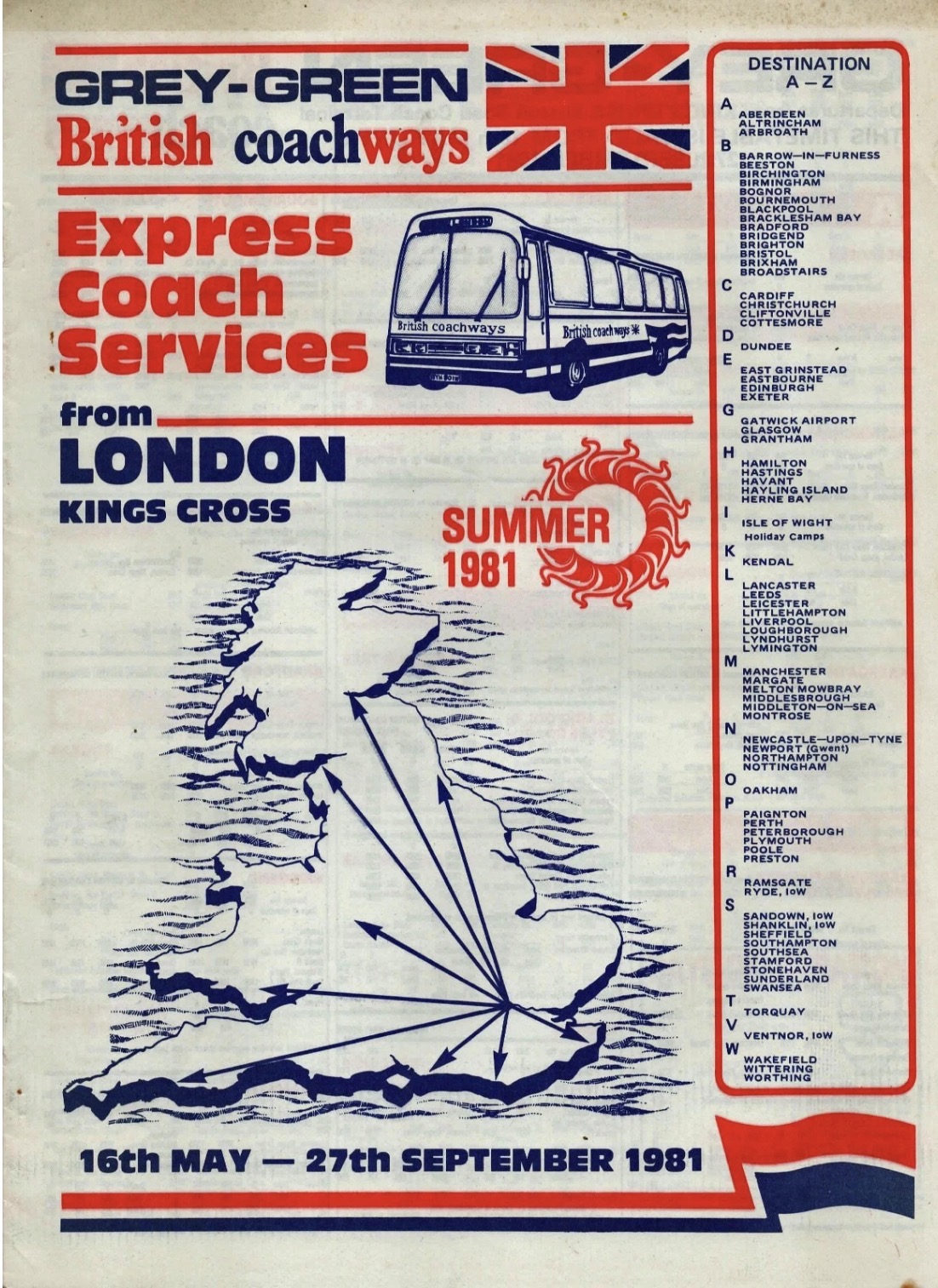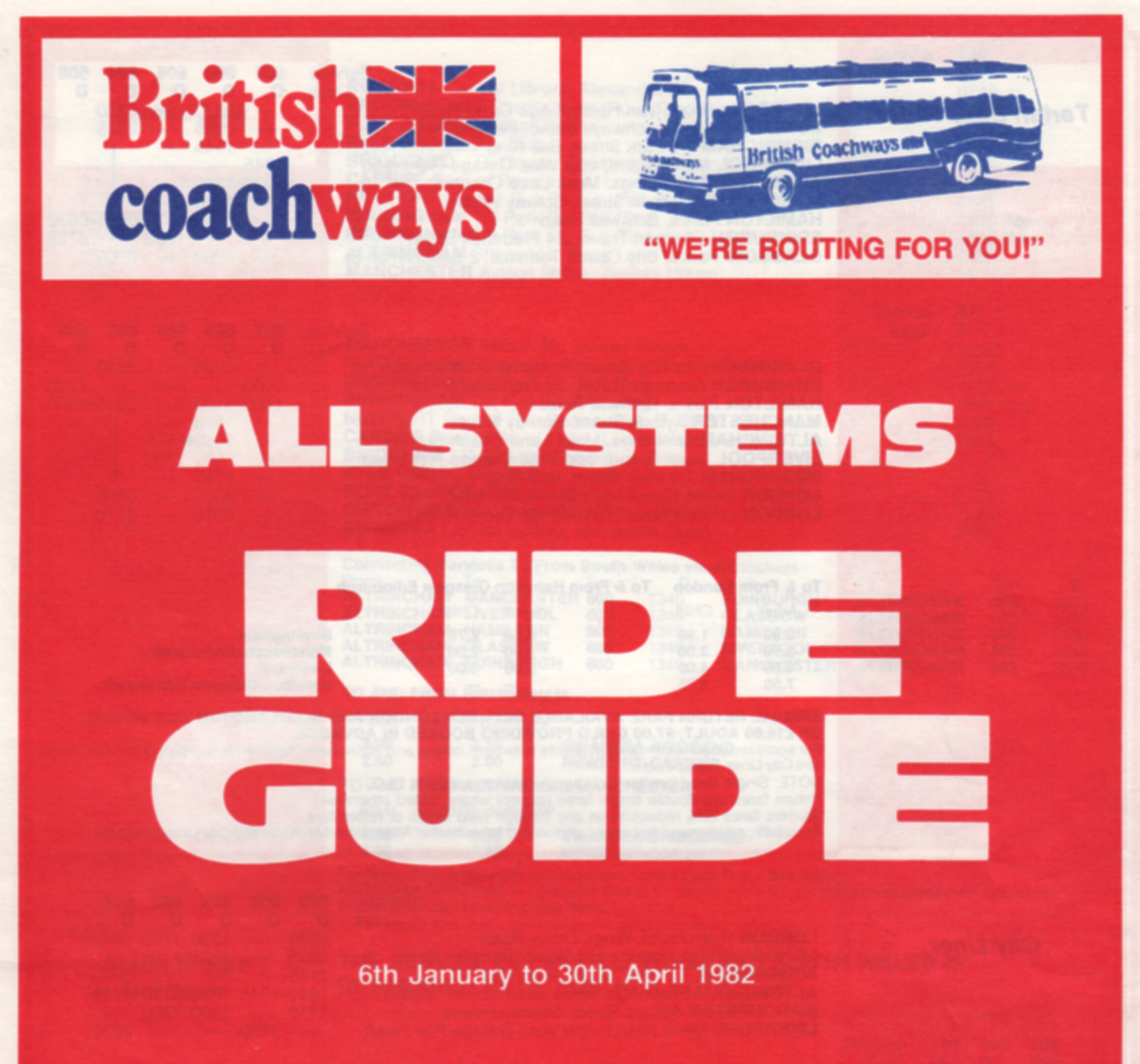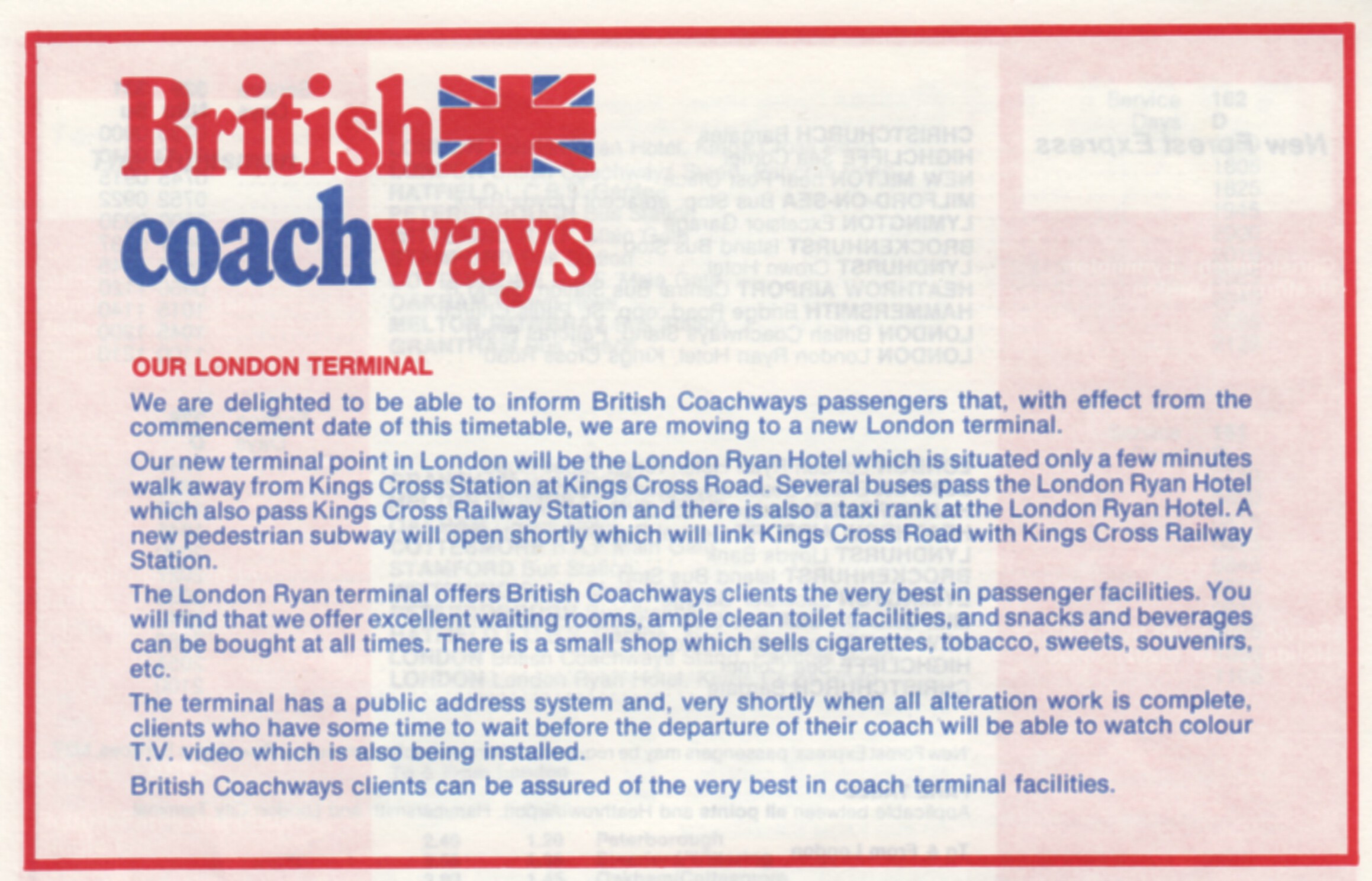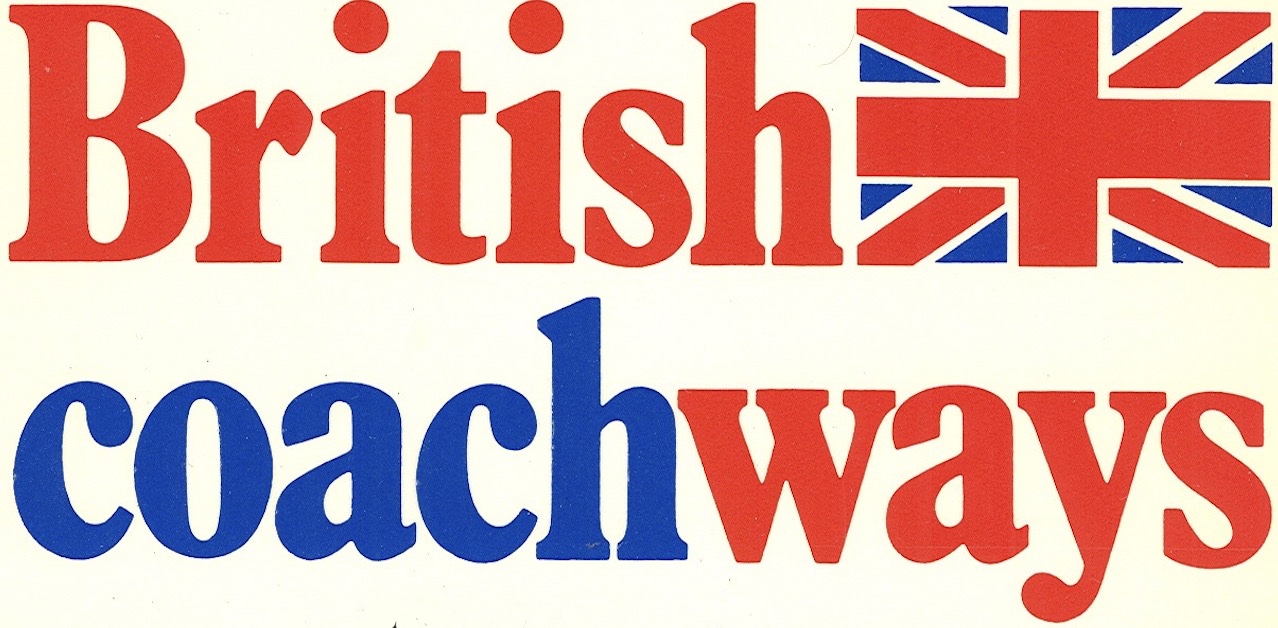
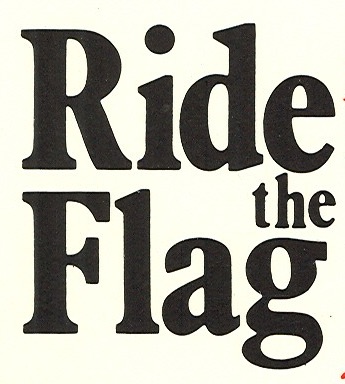
Using low fares as the basis of operations the publicity was based on the red white and blue theme used by British Airways, with a cheeky adaptation of their slogan of 'Fly the Flag' to 'Ride the Flag'. The new name and network were launched on 6th October 1980 by transport minister Norman Fowler. Within a month or so the route network expanded further when the consortium increased to ten members with the addition of Yorks Travel of Northampton, Excelsior of Bournemouth, Barton of Nottingham and Warner-Fairfax of Bristol.
Mike Kay of Grey-Green was marketing director of British Coachways and handled the central publicity and promotion. He said "the British Coachways fares are very carefully pitched, they are certainly cheap but are also realistic and National has recognised this by lowering its own fares to our level but no lower." Coachways fares were set at half of those of National but at such low fares Coachways needed to fill a high proportion of the available seats. The charting (originally done mostly by Grey-Green in London) worked on the principle that bookings close at 48 seats and would not reopen unless there was a high certainty that a second coach could operate profitably.
Most of the routes were named (eg Sherwood Forester, Tartan Easy Rider) and run on a joint basis between the distant provincial operator and London based Grey-Green but fares were not pooled. Low fares though need balancing by high loadings and one handicap was the London departure point, basically an undeveloped open site near Kings Cross, lacking in many basic facilities.
| A number of
coaches owned by consortium members were painted into the
consortium's livery, although the majority remained in the liveries of
their owners. A significant difference between National Express
and British Coachways was the type of coaches used, with the former
requiring that vehicles used on its services were to its specification.
British Coachways had no such requirement. Early symptoms that all might not be well came in April 1981 when both Yorks Travel and Warner-Fairfax withdrew from the consortium after just six months, with loss of their London - Northampton and London - Bristol workings. Despite that an ambitious summer timetable took effect on 16th May including a new direct London - Edinburgh service, a night service from London to Aberdeen and a cross country route from Paignton by way of Birmingham and Manchester to Edinburgh (named the Devon Scot). The intent of the lower fares was to attract passengers away from the services of the estblished operators but within a few weeks of British Coachways commencing National Express cut their fares to match those offered by the newcomers. By the end of the first year of operations the consortium had carried 750,000 passengers in total whilst during the same period National Express had carried some 12 million people over its network despite the introduction of the British Coachways competing routes. However below the surface all was again not well. Mike Kaye, the public face of British Coachways left. A dispute arose between Wallace Arnold and Grey-Green, the two original founding members, over publicity costs. Then at the end of June Grey-Green withdrew from the consortium after just nine months. This was unexpected to say the least as two new Leyland Leopards had just been delivered in British Coacjhways livery. No doubt this was one consequence of a change of ownership when the Cowie group acquired control of Grey-Green (Cowie would evolve later to become Arriva). Wallace Arnold stepped in to offset these changes and cover lost journeys through Evan Evans, their London subsidiary company. That lasted just four months before they too withdrew from the consortium, although they continued to operate to Yorkshire and the West Country in their own name in competition with their former partners in British Coachways. |
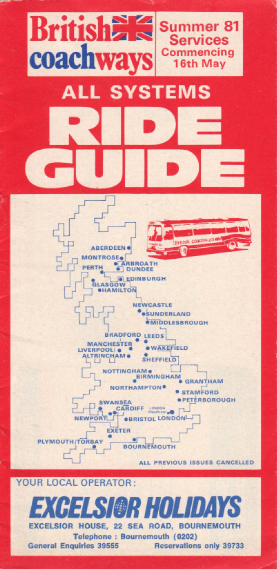 |
It then fell to Shearings to assume the central role in London and they opened an office in the Ryan Hotel in Kings Cross Road which served as a (somewhat inconvenient) departure point for the remaining consortium member's routes from 6th January 1982. Morris Bros of Swansea left the consortium at this time. Shearings was now the largest surviving member of British Coachways and the remaining operations continued through a second summer season. But Shearings too pulled out in August 1982, with departures now reverting from the Ryan Hotel to the original departure point. On 18th October 1982 the last four members of the consortium found themselves without a terminus in London when the site they had been using became unavailable: it was developed as the site of the new British Library. Services ceased operation from this date and British Coachways was disbanded after just two years.
A bus stop in Pancras Road, between Kings Cross and St Pancras railway stations, then served as the departure point for those routes still in operation (Parks to Scotland, Barton to Nottingham, Ellerman Bee Line to Middlesbrough and Excelsior to Bournemouth). Barton and Bee Line dropped their services in 1983 and the longest lasting of all would be Excelsior who continued independently operating their route until 31st January 1998 when it was merged with that of National Express following a change of ownership the previous year when the Maitland family had sold their business after 77 years.
Perhaps the last word on British Coachways is best left to Grey Green general manager, the late Tom McLachlan, who said in his letter in Classic Buses magazine issue 51 - 'Any honour remaining at the end of this saga went to Excelsior, which profited by the adventure, and to Morris Brothers, which did not. Both were good operators and excellent partners.'
